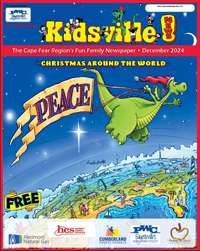 "Clay symbolized renewal and reincarnation. It alludes to the infinite possibilities of clay and the capacity to start all over again and be reborn."
"Clay symbolized renewal and reincarnation. It alludes to the infinite possibilities of clay and the capacity to start all over again and be reborn."
— Symbolism of Clay, Ceramic Arts Studio,
Barcelona
Cape Fear Studios presented the Clay Invitational Reunion on Oct. 25. This exhibit will be open until Nov. 19. Stan Simmons and Robert Helsel are potters/artists featured in this exhibit. Simmons and Helsel were members of Cape Fear Studios from 1994-1998. Robert Helsel was stationed at Fort Liberty (then Fort Bragg). His artistic expertise is clay and textures via the Raku technique. Stan Simmons is a Potter/Artist. His expertise within the clay medium is traditional. These are two of Cape Fear Studios favorite artists.
The Clay Invitational Reunion is located at Cape Fear Studios, 148 Maxwell Street, Fayetteville. The studio is open Tuesday to Friday, 11 a.m. to 5 p.m. and Saturdays 10 a.m. to 2 p.m. Admission is free to the public. Cape Fear Studios can be contacted at 910-433-2986.
According to Wikipedia, Ceramic art consists of clay and other materials. Clay is shaped in various forms inclusive of tableware, figurines, and sculpture. Pottery is one of the oldest human art activity and inventions originating before the Neolithic period. Pottery dates back to 29,000 – 25,000 BC.
Clay is an abundant material found in lakes, ponds, streams in all parts of the world. Ceramic Arts was the source of every-day cookware, tableware, and food storage for early civilizations. There are five clay art techniques: Terra Cotta, Polymer Clay, Raku, Ceramics, and Sculptural Ceramics.
Terra Cotta is Italian for “baked earth." The clay is fired but not glazed. It reflects warmth and simplicity. Polymer Clay is based on the combination of Polyvinyl Chloride (PVC). The clay is soft and malleable and becomes firm when placed in the oven. This is an effective technique for figurines.
According to Soul Ceramics, “Raku technique dates back to 16th century traditionally crafted by hand and not thrown on the Potter’s wheel. The glazed ceramic is taken from the kiln while still glowing red hot and placed in a combustible material such as sawdust or shredded newspaper. The item is starved of Oxygen which creates the colors within the glaze. Raku creates a unique design each time.”
Ceramic is processed with the kiln. The clay is shaped into a form and fired at intense heat for durability and tensile strength. Ceramic Arts are inclusive every-day dinnerware to abstract arts.
Sculptural Ceramics is represented by highly textured and interplay of rough and smooth surfaces. It can have realistic or abstract expressions.
Jill Dieffenbach, Board Member of Cape Fear Studios and Potter shares these insights about the exhibit, “What makes this show a must-see is to experience the creative diversity of the two potters as they follow two different approaches towards clay. Stan Simmons follows the traditional approach with clay with the use of form and creative glazing and firing. Robert Helsel combines traditional form with creative use of the Raku technique. Both Potters combine the best of clay art techniques.”
For more contact information, Cape Fear Studios via phone at 910-433-2986 or website, https://capefearstudios.com.
(Photo: One of the many pieces of ceramic art is displayed at Cape Fear Studios. Photo courtesy of Cape Fear Studios)

 How to resolve AdBlock issue?
How to resolve AdBlock issue? 








